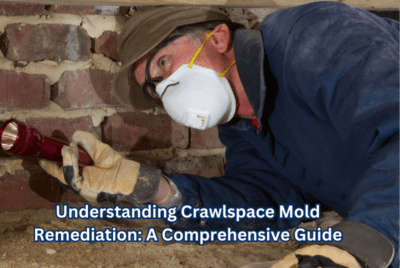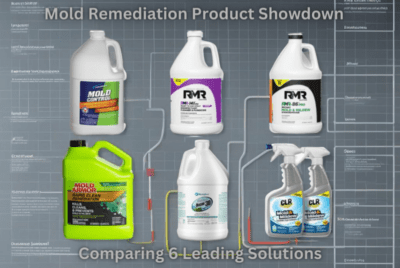Black Mold in Air Vents: A Comprehensive Guide
Hey there! Ever noticed a funky smell around your air vents? Or maybe you’ve been sneezing more often than usual? No, it’s not your imagination playing tricks on you; it could very well be black mold lurking in your air vents. Mold is a tricky thing; it’s like the ninja of home invaders—silent but potentially dangerous. Let’s dive deep into the mysterious world of mold—what it is, why it’s a problem, how to know if you’ve got it, and what to do about it. Sound good? Let’s get started!
What is Black Mold?
Alright, first things first. What the heck is black mold? Well, it’s a type of fungus that thrives in moist environments. Its scientific name is Stachybotrys chartarum, but let’s stick with “black mold” to keep things simple. This little troublemaker isn’t just ugly to look at; it could also be harmful to your health.
Why is Black Mold Dangerous?
So why should you be concerned? Imagine having an unwanted guest in your home that’s not just hogging the remote, but also making you sick. That’s black mold for you. It can cause respiratory issues, skin irritations, and a host of other health problems, especially if you’re allergic to it. Think of it as that neighbor who blasts loud music at 3 a.m.; except, in this case, the party’s happening inside your air ducts, and your health is paying the price.
What Causes Black Mold to Grow in Air Vents?
Now let’s talk about why black mold decides to set up shop in your air vents. It’s like the VIP lounge for mold spores, but why? Simply put, it’s often due to humidity, lack of ventilation, and the accumulation of dust and debris. It’s almost like the mold finds a cozy little corner and thinks, “Hey, this place has everything I need. Why not stay?” But unlike you enjoying a comfy sofa, mold’s comfort comes at your expense.

Signs and Symptoms of Black Mold in Air Vents
Ah, the telltale signs! If mold were a criminal, these would be the fingerprints left at the scene of the crime. So what should you look out for?
Signs You May Have Black Mold in Your Air Ducts
Your air ducts are basically the lungs of your home. Now, if your lungs were having issues, you’d know, right? The same applies to your air ducts. Keep an eye out for a musty odor, black dust around the vent grates, and even visible signs of mold.
Musty Odor
You know that damp, earthy smell you get when you walk into an old basement? If you’re catching whiffs of that around your air vents, that’s your first clue.
Black Dust
If you see mysterious black specks around your air vents, that’s another red flag. This isn’t just common dust; it’s like the breadcrumb trail leading to the mold’s hideout.
Allergy-Like Symptoms
Sneezing more than usual? Eyes watering for no reason? No, it’s not hay fever season again; your body might be reacting to mold spores in the air.
How Can You Tell if It’s Actually Black Mold?
Good question! Not all mold that appears black is the notorious black mold. You’ll need professional testing to confirm that. It’s like finding out whether that autographed baseball is genuinely signed by Babe Ruth or is just a clever fake. You’ll need an expert to know for sure.
Types of Mold in Air Ducts
Not all molds are created equal. In fact, your air ducts could be hosting a whole variety of molds, each with its own set of issues. Think of it as the most uninvited party you never wanted to host.
Acremonium, Alternaria, Aspergillus… the List Goes On
These are just some types of molds you might find. Each has its unique characteristics, like color, texture, and, unfortunately, the kinds of problems they can cause.
How to Remove Mold in Air Ducts
So, you’ve identified the culprit. Now what? Time to roll up those sleeves and get to work.
The Aftermath: Resolving Your Mold Issues
The key here is not to panic. Yes, mold is a problem, but it’s a solvable one. There are both DIY methods and professional services that can help you evict your unwanted tenant for good.
DIY Mold Cleaning Project
If the mold situation isn’t too dire, you might be able to tackle it yourself. Pour regular 3% hydrogen peroxide into a spray bottle, target the affected area, spray it, and allow it to work its magic for roughly 10 minutes. However, for more serious cases, it’s like trying to put out a forest fire with a water gun; you’ll need professional help.
Preventing Black Mold Growth in Air Vents
Alright, the mold is gone, the air smells fresh, and you’re breathing easier. Fantastic! But how do you keep this villain from making a sequel? Prevention is the name of the game here.
Use Good Quality Air Filters
Think of air filters as your home’s bouncers, keeping out the riffraff like dust, pollen, and yes, mold spores. You wouldn’t hire a bouncer who lets anyone walk into the club, right? So invest in good-quality air filters.
Clean Drip Pans Regularly
Here’s a hot tip: your air conditioner’s drip pans can be a hotspot for mold growth. Remember, mold loves moisture, and drip pans collect water. So, it’s like a VIP lounge for mold spores. Don’t let the party start—clean those drip pans!
Look Out for Leaks to Prevent Black Mold in Air Vents
Leaking pipes and air ducts can create those damp spots that mold loves. Think of it as throwing a housewarming party for mold. Don’t invite it in the first place. Seal those leaks.
Maintain Indoor Humidity Levels
Remember, mold loves humidity. Keep your home’s humidity levels between 30-50%, and you’ll make your home far less inviting to mold. Imagine if you showed up to a party and there were no snacks; you’d leave, right? Well, mold loves humidity like we love snacks. Take it away, and they’re less likely to stick around.
Inspect Your Air Ducts Regularly
This is the equivalent of doing regular health check-ups. Make it a habit to visually inspect your air ducts, especially after weather changes or any flooding incidents. A little vigilance can save you a lot of trouble down the line.
Conclusion
There you have it! You’re now armed with everything you need to identify, remove, and prevent mold in your air vents. We’ve tackled what black mold is, why it’s dangerous, the signs that you might have a mold problem, and how to deal with it. Remember, while DIY methods can work in some cases, don’t hesitate to call in the experts for severe infestations. Just like you wouldn’t try to do your own root canal, some things are better left to professionals. So, here’s to breathing easier and living healthier. Take care!
Further Reading
If you’re interested in diving deeper into the science and health implications of mold, here are some reputable sources that offer extensive research and guidelines:
- CDC – Basic Facts about Mold and Dampness
- URL: CDC on Mold and Dampness
- Why it’s relevant: The Centers for Disease Control and Prevention (CDC) offers comprehensive information on the health effects of mold exposure, including black mold. This source would give your article more credibility when discussing the dangers and symptoms of black mold exposure.
- EPA – A Brief Guide to Mold, Moisture, and Your Home
- URL: EPA on Mold and Moisture
- Why it’s relevant: The U.S. Environmental Protection Agency (EPA) offers detailed guidelines on how to identify and manage mold problems, including prevention and cleanup tips. This could strengthen your sections on how to remove mold and how to prevent future growth.





